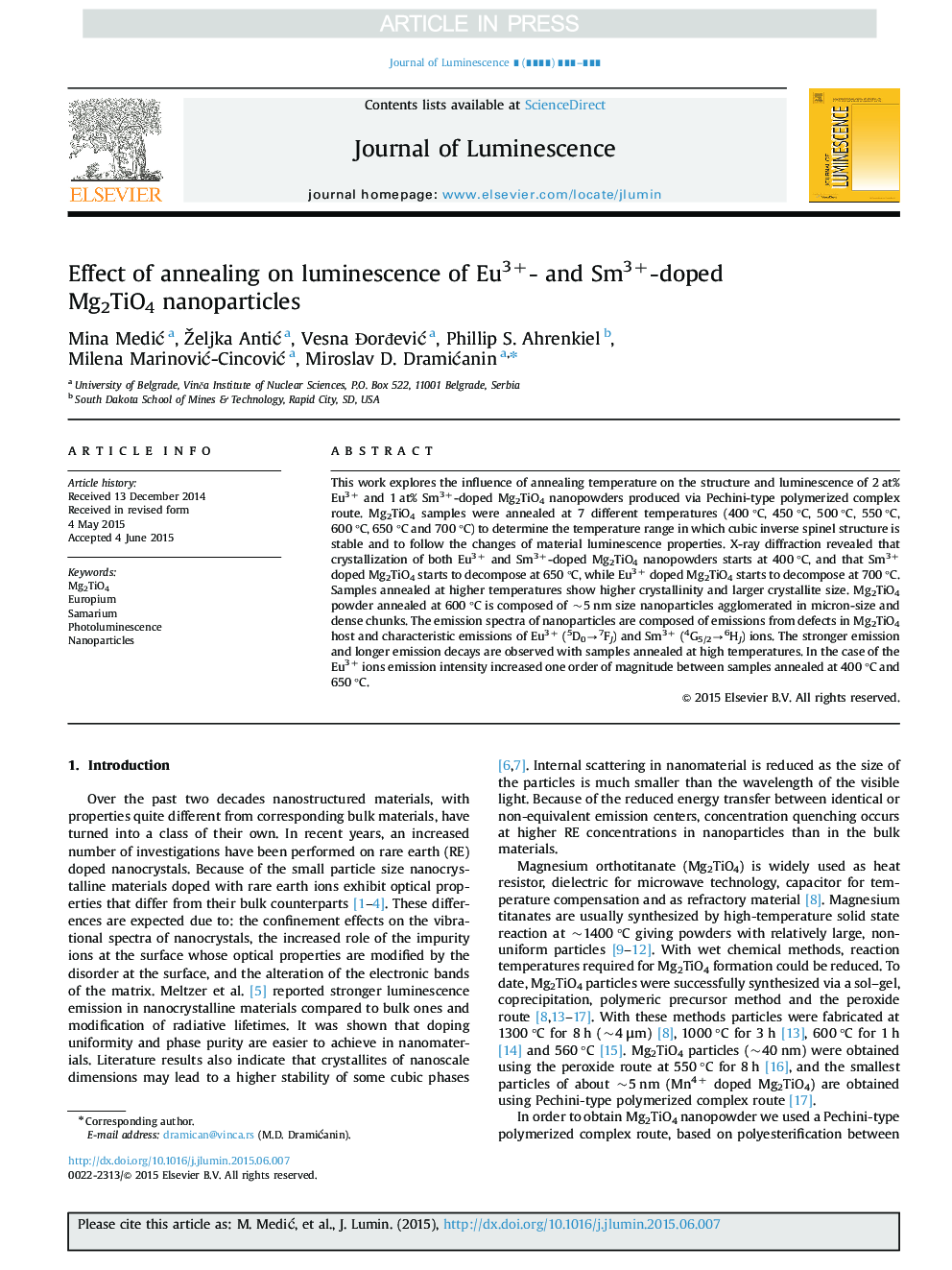| Article ID | Journal | Published Year | Pages | File Type |
|---|---|---|---|---|
| 5399036 | Journal of Luminescence | 2016 | 7 Pages |
Abstract
This work explores the influence of annealing temperature on the structure and luminescence of 2 at% Eu3+ and 1 at% Sm3+-doped Mg2TiO4 nanopowders produced via Pechini-type polymerized complex route. Mg2TiO4 samples were annealed at 7 different temperatures (400 °C, 450 °C, 500 °C, 550 °C, 600 °C, 650 °C and 700 °C) to determine the temperature range in which cubic inverse spinel structure is stable and to follow the changes of material luminescence properties. X-ray diffraction revealed that crystallization of both Eu3+ and Sm3+-doped Mg2TiO4 nanopowders starts at 400 °C, and that Sm3+ doped Mg2TiO4 starts to decompose at 650 °C, while Eu3+ doped Mg2TiO4 starts to decompose at 700 °C. Samples annealed at higher temperatures show higher crystallinity and larger crystallite size. Mg2TiO4 powder annealed at 600 °C is composed of ~5 nm size nanoparticles agglomerated in micron-size and dense chunks. The emission spectra of nanoparticles are composed of emissions from defects in Mg2TiO4 host and characteristic emissions of Eu3+ (5D0â7FJ) and Sm3+ (4G5/2â6HJ) ions. The stronger emission and longer emission decays are observed with samples annealed at high temperatures. In the case of the Eu3+ ions emission intensity increased one order of magnitude between samples annealed at 400 °C and 650 °C.
Related Topics
Physical Sciences and Engineering
Chemistry
Physical and Theoretical Chemistry
Authors
Mina MediÄ, Željka AntiÄ, Vesna ÄorÄeviÄ, Phillip S. Ahrenkiel, Milena MarinoviÄ-CincoviÄ, Miroslav D. DramiÄanin,
